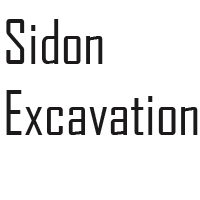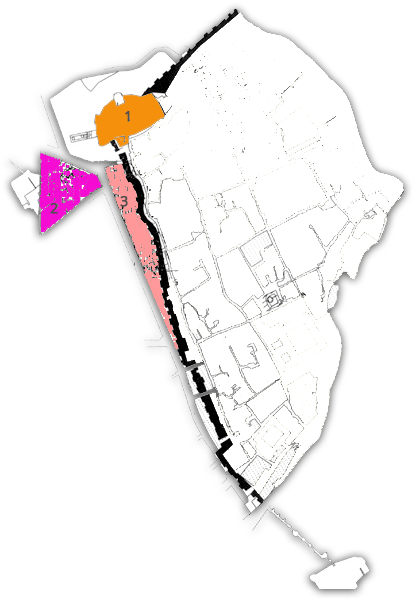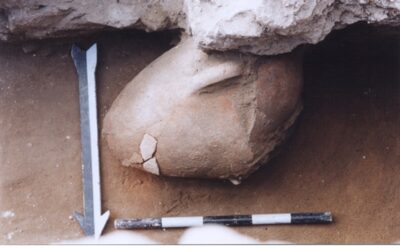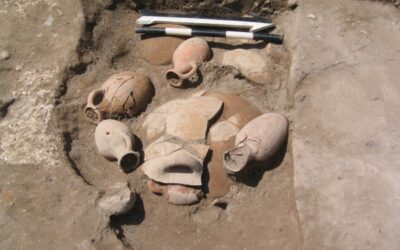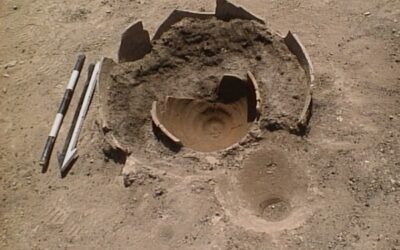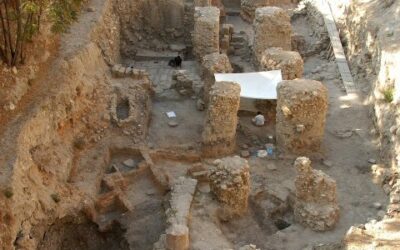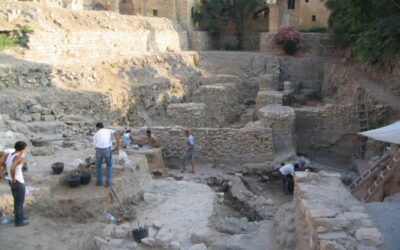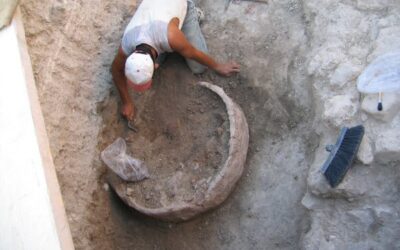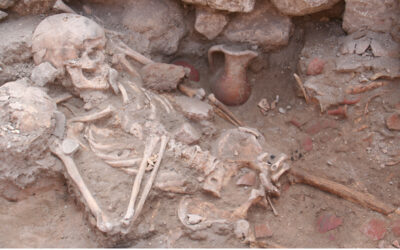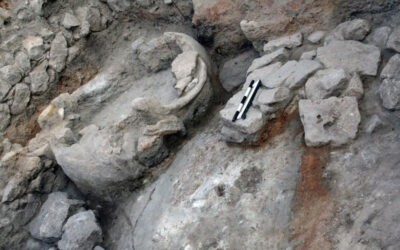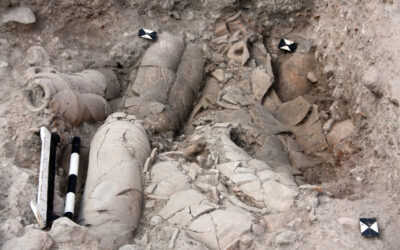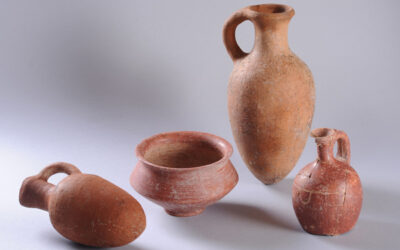SEASONS
PRESS RELEASE
PUBLICATIONS
North of the castle, Dunand chose another area of about 6500 sq. m. for soundings (number 3 on the map). This is the “college site,” named after an America school (the Gerard Institute) that was demolished between 1961 and 1963. The excavations undertaken by both archaeologists have not proven conclusive.
Descriptions of various archaeological deposits and architectural features were published in five articles by Contenau but they lack the method of excavation that has become common place today, namely the special attention given to archaeological layers and their relation to existing structures.
The few sherds published by him do not attempt in any way to relate their relative chronological position in accordance to the site’s stratigraphy.
As for Dunand, he only gives a brief synopsis of his work in a short preliminary article without publishing his excavation of the Roman bath.
YEAR 2001
Immediately above the Early Bronze Age level there was a layer of sterile sand. This sand varied...
YEAR 2003
In 1998, the Directorate General of Antiquities of Lebanon authorized the British Museum to begin...
YEAR 2002
Important historical facts were elucidated from the previous excavations at Sidon and the 2002...
YEAR 2004
Sidon: 2004 season of excavation Because Sidon was so densely built up, much of our information...
YEAR 2005
Sidon: 2005 season of excavation The seventh season of the British Museum excavations on the...
YEAR 2006
2006 season of excavation The eighth season of excavations on the mound of the ancient city of...
YEAR 2007
2007 season of excavation The ninth season of excavation on the mound of the ancient city of Sidon...
YEAR 2009
Sidon 2009 season of excavation The eleventh season of excavation on the mound of the ancient city...
YEAR 2010
Sidon 2010 British Museum excavations The twelfth season of excavation carried out by the British...
YEAR 2011
The thirteenth season of excavation carried out by the British Museum in collaboration with the...
Although Sidon was certainly one of the most important coastal towns of ancient Phoenicia, and is referred to in Egyptian, Assyrian, Babylonian and Greek sources, we have little information about the topography of the city in ancient times… our ignorance about ancient Sidon stems from the fact that there has been relatively little excavation.
